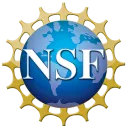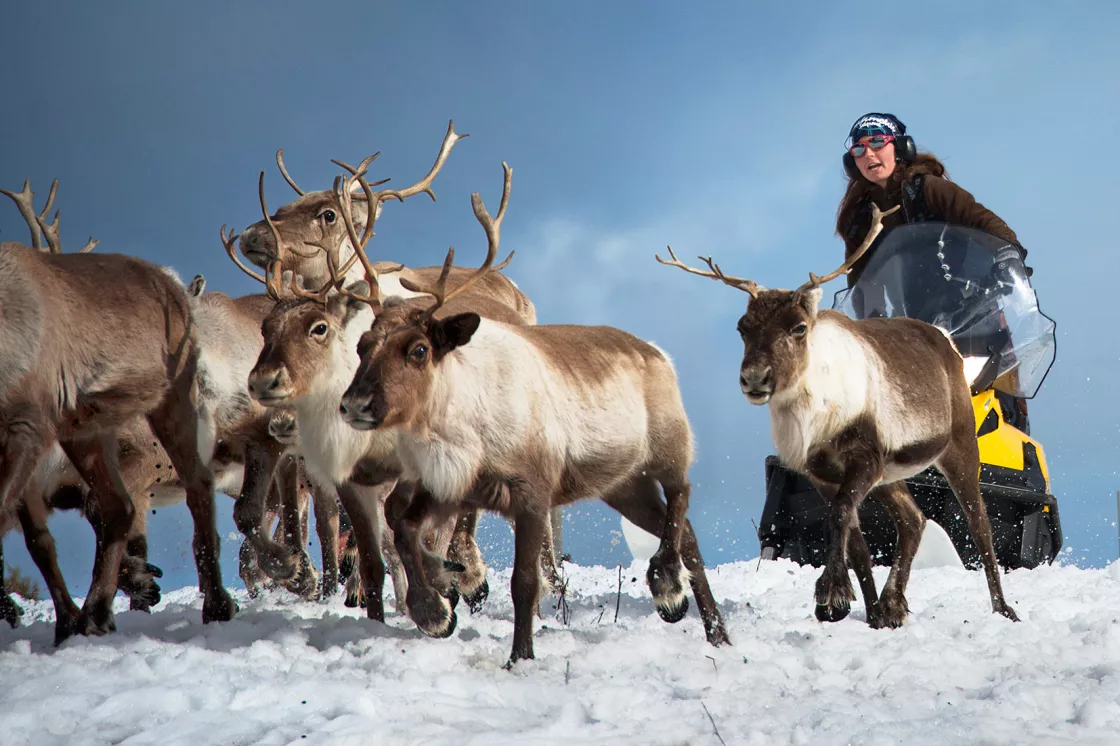
Arctic Rain On Snow Study (AROSS)
About AROSS
Rain on Snow (ROS) events occur when rain falls onto an existing snowpack and freezes, forming an ice crust that can have severe consequences to wildlife, infrastructure, and communities. Every rain on snow (ROS) event has its own character—no two are alike. Differences range in affected area size, duration, severity, and lasting effects. What is still unknown is to what degree ROS events as a whole will change, in frequency and intensity, in the coming years.
About the AROSS project
The Arctic is warming at a faster rate than the rest of the planet, a phenomenon known as Arctic Amplification. With this in mind, ROS events are expected to become more common, especially in the autumn and spring. Climate models also predict that with a warmer climate, precipitation will increase, with most of it falling as rain, making ROS events more severe.
However, the scientific community is questioning if ROS events have not already become more frequent and intense. The Arctic Rain on Snow Study (AROSS) at NSIDC seeks to answer that question, while compiling a comprehensive understanding of these extreme weather events and the extent of their impacts on wildlife, ecology, and communities.
AROSS is funded by the National Science Foundation and will run from 2019 to 2024. The project team will develop a database of all known rain on snow events across the Arctic since 1979, and incorporate data from surface observations, satellite, and output from modeling.
Why rain on snow matters
Impacts from ROS events range from mild inconveniences, such an inability to travel to work or school, to severe consequences that result in the starvation of tens of thousands of animals, damage to infrastructure, and harm to communities. After a ROS event in 2013, more than 26,000 square kilometers (10,000 square miles) of ice blanketed parts of the Yamal Peninsula in Siberia, leading to the starvation of 61,000 reindeer. Some Nenets herders were stranded on the tundra. Others had to turn to full-time fishing and borrow breeding stock to rebuild their herds, a multiyear process. For communities that depend on the environment for their livelihoods and cultural identity, shifts to unpredictable and unseasonable weather events can have lasting effects that stretch across generations.
Hunters and community members provide key insights to the project through interviews, group discussions, and the Local Environmental Observer (LEO) Network to assess effects of ROS events on livelihoods and ecosystems. By gathering quantitative data, photos and videos, and first-hand accounts from individuals, the LEO Network collects reports of ROS and other notable environmental events.
ROS events occur most often across the Arctic’s coastal regions. However, as climate change continues to raise Arctic temperatures, precipitation is projected to increase, with more falling as rain. There is also growing evidence that ROS events will stretch farther across the entire Arctic region.
AROSS gathers information on where and how these ROS and melt-refreeze events occur, noting their severity, frequency, and impacts. Detailed and comprehensive data can assist Arctic peoples and decision makers in mitigating the challenges that often accompany ROS events.
AROSS is a collaboration between NSIDC, the Cooperative Institute for Research in Environmental Sciences, the University of Colorado Boulder, the University of Winnipeg, the Alaska Pacific University, and the University of Lapland. The project also relies on observations and input from local Arctic communities and the LEO Network. It is funded for five years by the National Science Foundation’s Navigating the New Arctic program, which funds interdisciplinary research that informs our understanding of Arctic change and its local and global effects. While NSF funding of the project only lasts for five years, those involved anticipate AROSS being a “living project” that will extend far beyond this initial funding. Award number 1928230.
Creating data and knowledge of ROS events
The goal of AROSS it to create a clearer understanding of the causes and impacts of ROS events. To achieve this, AROSS has assembled a multi-disciplinary and multi-cultural research team that draws upon data and knowledge from many different sources.
AROSS is producing a variety of data during the five-year project, 2019 to 2024. A key data product the team is developing is a database of all known ROS events across the Arctic since 1979, based on output from atmospheric reanalyses, satellite data, and surface observations.
Atmospheric reanalyses are a form of weather models, provide a large-scale view of ROS causes, scale, and severity. Satellites detect liquid water on the snow surface, while weather models forecast the amount of precipitation during a ROS event and provide information on the types of weather patterns that increase ROS events. Surface observations are also used to validate the reanalyses and satellite data. At the ground level, meteorological stations measure temperature, air pressure, precipitation, and snow depth.
Surface observations also come from the Local Environmental Observer (LEO) Network to provide additional context for the ground-level impacts of ROS events. The LEO Network collects reports of ROS and other notable environmental events by gathering quantitative data, photos and videos, and first-hand accounts from individuals. Local observations are provided by communities, reindeer herders, and other local groups, who move over wide areas during the year, paying close attention to changing weather and environmental conditions and observing wildlife behavior.
Hunters and community members contribute valuable observations and insights through interviews, group discussions, and the LEO network to assess effects of ROS events on wildlife and community activities. AROSS is partnering with Arctic residents through the LEO Network and other partners to better understand implications for local livelihoods, especially reindeer husbandry and reindeer mortality episodes. Expert systems models will be developed to assess how ROS and extreme precipitation events impact wildlife, reindeer husbandry, and other community activities in terms of event timing, geographic scale, snow and land cover, and existing practices.
This website will become a data and knowledge hub on Arctic ROS and extreme precipitation events and their impacts. It will also become the project’s extension to the US Arctic Observing Network.
Any opinions, findings, and conclusions or recommendations expressed in this material are those of the author(s) and do not necessarily reflect the views of the National Science Foundation.
